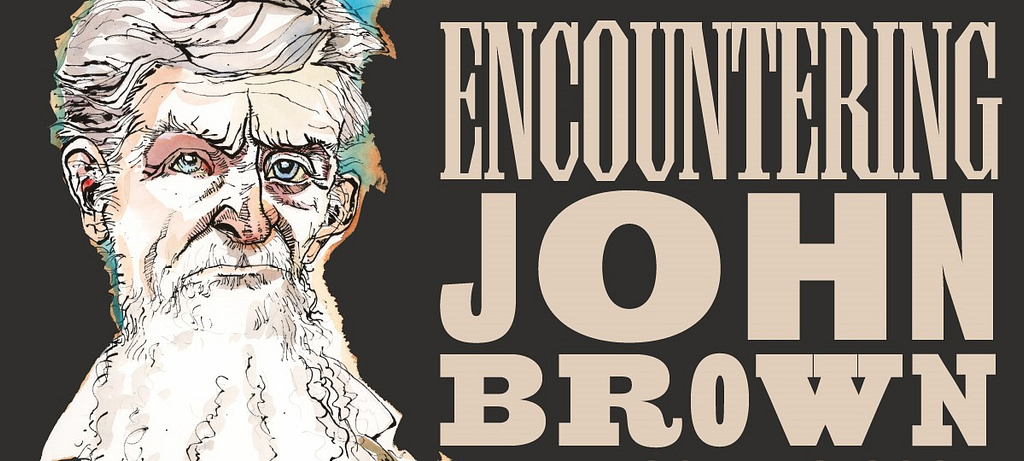
On Wednesday, October 13, a group of Rotarians and their guests toured the Encountering John Brown exhibit at Watkins Museum. LCR is one of the sponsoring partners of the exhibit which will be open noon to 8:00 p.m. through November 6.
The exhibit tells the story of the radical abolitionist John Brown by utilizing first-hand accounts and illustrations from his time period. Kansas artist Brad Sneed created large illustrated panels which serve to emphasize significant points in his story.
Brown grew up in Ohio where he encountered strong abolitionist ideas. He came to believe that he was an instrument of God in the fight against slavery and that violence was a just response. Brown married Dianthe Lusk, and together they had seven children. He worked as a tanner and a stock man through out his life, and was not always successful in business. Brown also lived in Pennsylvania and Massachusetts and became involved in the underground railroad. In 1883 he married Mary Ann Day, and they had 13 more children.
In 1856, Brown moved to Kansas to engage in the fight to keep slavery out of the territory. He lead a bloody reprisal raid on a pro-slavery family near Potawatomie and fought in skirmishes at Black Jack and Osawatomie. Brown then led an 1859 raid on the federal arsenal at Harpers Ferry, Virginia, hoping to spark a slave rebellion. However, Brown was captured and several of his party were killed.
Brown’s trial and execution gained national attention. His actions inflamed the South and emboldened abolitionist, pushing the nation closer to war.
At a meeting after the tour, Rotary members commented on the variety of Brown’s life experiences and on the number of famous people he encountered along the way (Frederick Douglas, Sojourner Truth, Robert E. Lee). There was a good discussion about whether Brown was a martyr or a terrorist. The jury is still out on that point, but there is no doubt that John Brown had a huge impact on his time.